The 50 most important people in Canada
Our annual, unapologetically subjective list includes everyone from rappers and corporate predators to chefs and non-profit paragons
Share
Obsessing over power can feel trivial, even a little decadent. It’s almost too much fun to look at who wields it, and news can make other ways of thinking about our times feel more responsible. This fall, for example, Canadians have been jolted into worrying more about terrorism after the murders of two soldiers serving in their own country. We’ve been troubled by attacks on First Nations women, including 16-year-old Rinelle Harper, who somehow survived to be found on the banks of the Assiniboine River in Winnipeg.
Yet considering who is powerful can be a way of gaining insight into these urgent issues. On this year’s Power List—the second annual compilation by Maclean’s writers and editors of this unapologetically subjective ranking—we highlight the clout of the top Mountie, who will soon be handed new anti-terrorism powers, and two key First Nations leaders, standouts among those striving to leverage the limited power Aboriginal communities possess.
Finding commonalities among these 50 intriguing individuals can be tricky. Our list ranges from household names to: who’s that? Pinnacle corporate predators rub shoulders here with non-profit paragons. To help you understand how we picked them, you’ll see, beside each name, three icons.
There’s no algorithm at work here. Are you annoyed by our choices? Angered by our omissions? We invite you to write in our comments, tweet at us, or join us on Facebook to offer your own powerful case for a different list.
This symbol indicates our weighting of the individual’s institutional standing. No surprise that the newly named head of Canada’s biggest bank ranks the maximum five. On the other hand, while we detect serious power in the creative clout of a certain movie director, he doesn’t head a studio or produce his own films, so we award him only a single blue pillar icon.
This tells you how much timing mattered in our choice of a given individual, based on the way things look to us in late 2014. Power expresses itself, after all, through the tasks of the moment. You won’t have to read very far into our list to see that we recognize the pressing priority of the Ebola challenge: Five clocks to a doctor near the centre of the crisis. The same principle works in reverse: Names from sports that made our 2013 list because we were looking ahead to the 2014 Winter Olympics in Russia have fallen off entirely.
The power that flows from great ideas is perhaps the most appealing kind. So we enjoy awarding multiple light bulbs to, as you’ll see, a university resident with new notions about linking academia to the community, or a young doc with new ways of thinking about the health of old folks.
Maclean’s 2014 Power List: Canada’s 50 most powerful people
- 50. Christina Jennings
- 49. Yannick Nezet-Seguin
- 48. Jeremy Charles
- 47. Samir Sinha
- 46. Shawn Atleo
- 45. Arthur Fogel
- 44. Peter Singer
- 43. Elyse Allan
- 42. John Ruffolo
- 41. Jean-Pierre Blais
- 40. Drake
- 39. Arvind Gupta
- 38. George Stroumboulopoulus
- 37. Michael Cooke
- 36. Ann Cavoukian
- 35. Stephen Scherer
- 34. Lisa LaFlamme
- 33. Heather Reisman
- 32. Rob Merrifield
- 31. Jason Kenney
- 30. John Baird
- 29. Stephen Poloz
- 28. Brad Wall
- 27. Don Iveson
- 26. Tom Renney
- 25. Marianne McKenna
- 24. Alia Hogben
- 23. Galen G. Weston
- 22. Jim Prentice
- 21. Naomi Klein
- 20. Thomas Mulcair
- 19. Jean-Marc Vallée
- 18. Art Sterritt
- 17. Joe Oliver
- 16. Christy Clark
- 15. Kirstine Stewart
- 14. Gerry Butts
- 13. Justin Trudeau
- 12. John Tory
- 11. Kathleen Wynne
- 10. Philippe Couillard
- 9. Jenni Byrne
- 8. Bob Paulson
- 7. Bharat Masrani
- 6. Guy A. Lepage
- 5. Janice Charette
- 4. Beverley McLachlin
- 3. Mark Wiseman
- 2. Joanne Liu
- 1. Stephen Harper
#50: Christina Jennings
Mystery export
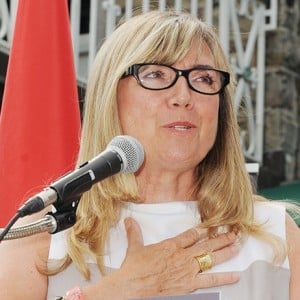 |
A former town planner, Christina Jennings started the Toronto-based production company Shaftesbury in 1987, which creates and distributes original programming. But her biggest success has come recently with Murdoch Mysteries, a detective series set in Toronto at the turn of the 20th century. Originally aired on City TV and now on the CBC, it broadcast its 100th episode this year, and has been aggressively sold to international markets: “It’s amazing to create a Canadian show that’s a hit in prime time; that’s a hit in France, dubbed; that’s a hit in England,” Jennings says. It helps that the show fills a broadcasting niche as the kind of non-serialized crime drama most U.S. networks don’t make anymore: “You can miss a few episodes and it doesn’t matter,” Jennings explains. “You can have season 2 back-to-back with season 8 and it doesn’t make a difference.” — Jaime J. Weinman
#49. Yannick Nezet-Seguin
And then he lifts the baton
![]()
![]()
![]()
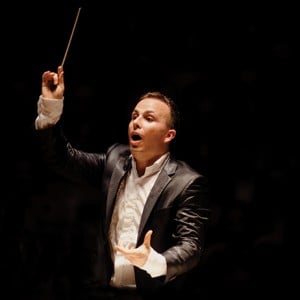 |
The tiny, perfect, Montreal-born music director of his hometown’s Orchestre Métropolitain turns 40 in the spring. He still looks younger than that—until he lifts a baton and orchestras thunder in response. In his third season as music director of the mighty Philadelphia Orchestra, he’s turning around its financial fortunes and revitalizing its artistic mission. He records whatever he wants—and that’s a lot—for Deutsche Grammophon, Europe’s greatest record label. He showed political clout back home when he complained about the new Quebec government’s plans to close small-town music conservatories; Philippe Couillard abandoned the plan within days. What’s next? The legendary Berlin Philharmonic will name a new music director in May. “Yannick,” as he’s known, is on everyone’s lips as a top candidate. — Paul Wells
#48. Jeremy Charles
Foodie for thought
![]()
![]()
![]()
 |
It is his penchant for collecting local Newfoundland ingredients and turning them into a fine dining experience that has transformed Jeremy Charles into one of Canada’s most celebrated chefs. A meal from the 37-year-old head chef at Raymonds restaurant in St. John’s might feature anything from moose ravioli to cod sounds (the fish’s bladder) to Acadian sturgeon caviar. Haute cuisine doesn’t have a low price tag. The seven-course tasting menu costs $125, before factoring in any wine.
Charles left the East Coast at 19 and spent the next decade mastering his skills at culinary schools in Chicago and Montreal. Not long after his return home, Charles opened Raymonds in 2011, which enRoute magazine ranked at No.1 for “best new restaurant” in the country; several consider it simply one of Canada’s best restaurants of any vintage Charles has created a devoted following of foodies and fellow chefs alike, who are all lured to taste what Newfoundland and Labrador has to offer. — Aaron Hutchins
Back to top
#47. Samir Sinha
Elder doctor
![]()
![]()
![]()
 |
At the ripe age of 37, Dr. Samir Sinha is emerging as Canada’s most compelling voice for the elderly. In 2012, as the lead author of Ontario’s seniors strategy report, Sinha called for improving health care for older Canadians—and keeping them as physically active as possible—at a time when our ballooning aging population makes this a critical social issue. In 25 years, one-quarter of Canadians will be older than 65. And older adults currently account for 60 per cent of hospital bed days, while making up only 15 per cent of the population. “We have a health care system that was designed to meet the needs of younger Canadians, and now it needs to rapidly adapt to meeting the population it’s serving most,” Sinha says.
As director of geriatrics at Toronto’s Mount Sinai Hospital since 2010—upon his return from Oxford University where, as a Rhodes Scholar, he completed his master’s in medical history and a Ph.D. in sociology—Sinha has proven his approach works. His patients spend far less time in hospital than the provincial average and are more likely to live longer, independently at home. This includes Mr. W, now 104, who came under Sinha’s care in 2010 when he was admitted for pneumonia. Sinha ensured Mr. W stayed active and did physiotherapy. He returned home, where he’s been ever since. Many more Canadians may soon benefit from his approach: Sinha is working with the Canadian Medical Association on a national seniors strategy. — Rachel Browne
#46. Shawn Atleo
Pragmatist, incrementalist, motorcyclist
![]()
![]()
![]()
 |
In January, 2013, moments before entering a crucial meeting with Prime Minister Stephen Harper, Shawn Atleo, chief of the Assembly of First Nations (AFN), received a text message from Theresa Spence: “Since you have decided to betray me,” wrote the hunger-striking Attawapiskat chief, “all I ask of you now is to help carry my cold, dead body off this island.” To Atleo, the missive landed like a body blow.
Last May, after months of ceaseless, rearguard action from his political rivals, Atleo resigned partway through his term, becoming the first-ever AFN chief to do so. He’d had enough of Ottawa, he declared. He headed home to B.C., then travelled to the U.S. solo, by motorcycle.
The AFN’s loss was B.C.’s gain. Last month, B.C. Premier Christy Clark tapped the 47-year-old father of two to head a crucial new round of talks between First Nations, industry and government, raising an intriguing question: Can a leader’s power actually rise after he’s been dumped from office?
The job, more promising and powerful than anything the fractious AFN is attempting, seems tailor-made for the enterprising B.C. chief. Atleo, who got his business start by launching a coffee shop in east Vancouver, has long spearheaded First Nations collaboration with industry. (B.C. First Nations are involved in mining and energy projects worth $300 billion.) As he once told the Toronto Board of Trade: “We’re looking for partners. We’re open for business.” He was unlike anything the AFN had ever seen.
Atleo, a hereditary chief of the Ahousaht on western Vancouver Island, was schooled in the pragmatic, incrementalist approach favoured by B.C. Native leaders, who tend to negotiate for their rights. The method puts them at odds with the Prairie leadership, who tend to fight for theirs. “It is our time as indigenous peoples,” says Atleo. “We must smash the status quo.” — Nancy Macdonald
#45. Arthur Fogel
Live and in concert
![]()
![]()
![]()
 |
As an organizer of music tours for everyone from the Rolling Stones to Lady Gaga, this former drummer has been a force in the music business since the 1980s. But when rock stars made most of their money from record sales, Arthur Fogel’s focus on live entertainment was, as he put it to the Independent newspaper, “at the bottom of the food chain.” Now recorded music has flatlined, and touring has become more important, turning the 60-year-old Fogel, head of global touring for Live Nation, into a celebrity. A documentary film featured Bono calling him “the most important person in live music,” and his hometown paper, the Ottawa Citizen, called 2014 his “year of living famously.” Of course, that attention also brings more negative rumours; when Lady Gaga’s 2014 tour was reported to have lost $30 million, Fogel responded that “just a complete fool would say something like that.” Fame comes at a price. — Jaime J. Weinman
44. Peter Singer
Global health innovator
![]()
![]()
![]()
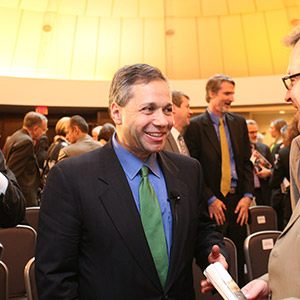 |
For the last 25 years, Peter Singer has dedicated his life to the impossible: solving the world’s health and social problems. His 56-page resumé proves this. He’s a medical doctor and professor, and holds numerous titles—from director of the Sandra Rotman Centre to foreign secretary to the Canadian Academy of Health Sciences—and even more accolades, including the Order of Canada and an appointment with the Royal Society of Canada. But it’s Singer’s role as CEO of Grand Challenges Canada where he’s had the most impact and turned Canada into a leader in development and global health.
Launched just over four years ago with funding from the federal government, Grand Challenges Canada finds and funds bold new ideas from innovators around the world to solve health problems in poor countries, from anemia to contaminated water. Under Singer, it has provided $158 million (and an additional $224 million leveraged from outside investors) to develop nearly 700 innovations in more than 80 low- to middle-income countries. But Singer is quick to deflect attention away from himself. “There’s a lot of credit to go around to everyone who makes all of this possible,” he says. “We have a fantastic team and it’s the innovators who are making the difference in peoples’ lives.”
At the Prime Minister’s global summit on maternal, newborn and child health last spring in Toronto, several innovations were debuted, including a project out of the University of British Columbia: a mobile phone app that measures blood oxygen levels to see if a pregnant woman is at risk for pre-eclampsia, one of the deadliest pregnancy complications in developing countries.
“We need innovations like these, because without them, we’ll just be stuck in the present, and that’s just unacceptable,” says Singer. Another Grand Challenges innovation in the works this year is a rapid diagnostic test for Ebola, being developed by an innovator from Uganda.
“It has been an incredible honour to do this on behalf of Canada,” Singer says. “It’s an initiative of which we can all be proud.” — Rachel Browne
43. Elyse Allan
Energy emissary
![]()
![]()
![]()
 |
Alberta’s oil sands are both an economic boon and public relations disaster for Canada—a key resource that unfortunately also leaves a relatively large carbon footprint. But rather than engage in endless debates about the merits of squeezing gooey bitumen from the ground, General Electric and GE Canada CEO Elyse Allan are doing what they can to square the circle. Earlier this year, GE launched a program to fund research aimed at reducing emissions of oil sands companies and improving their energy efficiency, with Allan saying that “collaboration is key to solving big challenges.” When she’s not trying to solve one of the country’s thorniest economic problems, all while running the Canadian arm of one of the world’s biggest companies, Allan devotes hours to sitting on government advisory boards, as well as those of the C.D. Howe Institute, Conference Board of Canada and Royal Ontario Museum. — Chris Sorensen
42. John Ruffolo
Always up for a venture
![]()
![]()
![]()
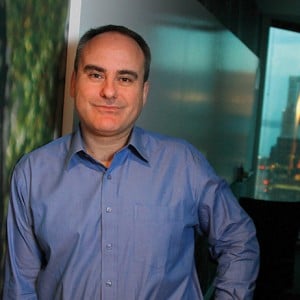 |
If oil prices keep falling, Canada will quickly realize the danger of relying on resources for growth. It’s a good thing, then, we have John Ruffolo, head of OMERS Ventures, the $200-million venture capital arm of the Ontario municipal workers’ pension fund, planting the seeds for Canada’s next generation of tech giants. Ruffolo, 48, was no stranger to the start-up sector when he took on the venture fund in 2011. At the consulting firm Deloitte in Toronto he worked closely with early-stage investors to connect them with tech entrepreneurs. His talents and influence are needed more than ever. Tech firms account for just three per cent of the market capitalization of the Toronto Stock Exchange (compared to 25 per cent for energy and mining). So far Ruffolo has nurtured a crop of start-ups, including Hootsuite, Shopify and Vision Critical, that are on track to go public, bringing much needed diversity to Canada’s capital market and helping to revive the country’s entrepreneurial spirit. — Jason Kirby
41. Jean-Pierre Blais
More than just cute kittens
![]()
![]()
![]()
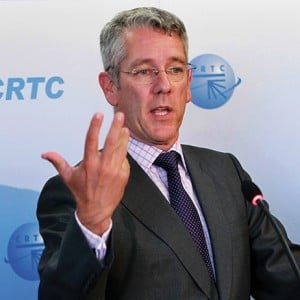 |
As chairman of the Canadian Radio-television and Telecommunications Commission, Jean-Pierre Blais is the most-watched federal regulator. The Conservative government wants consumers to see more price-cutting competition for cellphone services and more choice in how they pay for cable TV channels. Blais is supposed to make it happen. It’s routinely said the CRTC oversight spans a $100-billion business undergoing a revolution. But Blais sets himself up as a voice of caution. In the era of Netflix, Shomi and HBO online, he points out that about 60 per cent of Canadians don’t stream TV shows on their computers. “Canadians still watch on average 28 hours of traditional TV a week,” Blais said recently. “And the hours of viewing [spent on] online video services, including cute kittens on YouTube, is only 1.9 hours per week.” Still, when it comes to crafting new rules for service, and new safeguards for Canadian content, Blais is the man in the hot seat. — John Geddes
#40. Drake
From crown prince to kingmaker
![]()
![]()
![]()
 |
If we’re to judge Aubrey Drake Graham by the metric Canadians too often use to assess our homegrown talents—how famous are they in the U.S.?—there’s no denying the 28-year-old’s power, with his claim to the crown of the American-born rap game. He’s bankable in a fraught music industry, besting the Beatles in Billboard-charting singles in just five years. As the Toronto Raptors’ global ambassador, his brand has become infused with a franchise in well-timed ascendance. And he’s doing it in an essentially Canadian way—he owns the vulnerable image he’s curated, turning jokes about lint-rolling his pants at a basketball game and his average athletic prowess into marketing campaigns and self-deprecating Instagram posts. But perhaps the truest tell of his influence is that he’d rather be a hip-hop kingmaker than a mere crown prince: his label OVO Sound is cranking out acolytes in his hazy R&B-rap image, from PartyNextDoor to iLoveMakonnen. “How the game turn into the Drake show?” he rapped on the triumphal throwaway track Draft Day. How indeed. — Adrian Lee
#39. Arvind Gupta
Thin on experience, rich in conviction
![]()
![]()
![]()
 |
It’s not the fact that Arvind Gupta is a computer scientist that makes him such an unusual choice to oversee the University of British Columbia and its $1.4-billion budget. It is that UBC’s new hire has zero administrative experience in academia, a far cry from the usual path from professor to dean to vice-president to president.
What Gupta does have is a belief that exceptional research of all kinds has a place at UBC. This is blasphemy for those who believe university is a place to learn for learning’s sake, and that research should be “pure” and divorced from commercial interests. Gupta isn’t afraid of stirring the pot. He argues that collaborating with industry is UBC’s way forward—and makes his case for partnerships with the private sector rather bluntly, at least by the polite standards of power struggles in academia. Gupta is also an innovation expert who, as CEO of Mitacs, overhauled the non-profit research-funding organization to make it a place where Canada’s top graduate students are paired with industry to solve real business problems. He’s already announced he will add $100 million to UBC’s $565-million research budget. Now it’s up to Gupta to prove his hypothesis that this multi-million-dollar investment will distinguish UBC graduates and make their diplomas worth more than others. “What we’re doing now,” he says, “is not good enough.” — Nancy Macdonald
38. George Stroumboulopoulos
A vegan’s power play
![]()
![]()
![]()
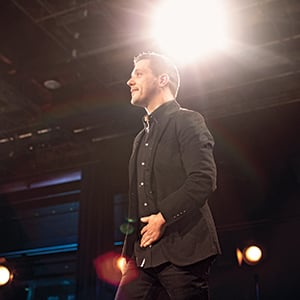 |
He’s gone from being Canada’s boyfriend to the nation’s emcee. As the face of Rogers’ new 12-year, $5.2-billion investment in the NHL, “Strombo”—his nickname—has been handed perhaps the most culturally significant perch in the country. Each weekend, the 42-year-old vegan now guides the collective consciousness as the host of Hockey Night in Canada—a 62-year Saturday tradition—and as the main studio anchor for Sunday’s Hometown Hockey. With a resumé that includes stints in alternative radio and as a Much Music VJ, a 10-year run as the host of his own CBC television talk show and a couple of unsuccessful attempts to break into the U.S. market, Stroumboulopoulos was not an obvious choice. But early in his tenure, he already seems at ease, infusing the broadcasts with his hipster tastes and a genuine passion for the game. “No one out there can out sports-fan me,” he told Maclean’s shortly after he was hired. How much pull does this skinny-jeans aficionado now enjoy? His feature guest on the season opening broadcast was none other than Stephen Harper. The prime minister, another dark-horse hockey dweeb, took him on a tour of his “jersey room” (actually a closet) at 24 Sussex and showed off his prized possession, a Leafs sweater autographed by all the surviving members of the 1967 Cup-winning team. Interesting TV, with some bonus high-powered trolling: Strombo, a noted Habs partisan, bleeds blue, blanc et rouge. — Jonathon Gatehouse
#37. Michael Cooke
Man on a mission
![]()
![]()
![]()
 |
In the five years since he was hired as editor of the Toronto Star, Michael Cooke has overhauled the once-plodding daily and turned it into a relentless powerhouse that sets the bar for investigative reporting in Canada. From dirty doctors to Rob Ford’s crack smoking to Jian Ghomeshi’s alleged sex assaults, Cooke’s mission to blow the lid off corruption and deception has the country taking note. His newspaper wins prestigious journalism awards—this year, the Micheners—but more important, it pushes the national agenda on issues of public policy and abuse of power. Born and raised in a small village in Lancashire, England, he took on the local fox hunt in his first gig as 17-year-old cub reporter, setting the tone for the rest of his career. After immigrating to Canada in 1974, he had stints at papers across the country before moving south of the border to the Chicago Sun-Times and New York Daily News. His investigative team is the envy of Canadian journalists, and word is he’s looking to expand its reach to Ottawa. Parliament Hill, you’ve been warned. — Rachel Browne
#36. Ann Cavoukian
Privacy in 37 languages
![]()
![]()
![]()
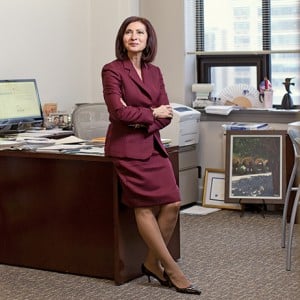 |
Long before her high-profile 15-year tenure as Ontario’s information and privacy commissioner came to an end earlier this year, Ann Cavoukian had solidified her reputation as an international expert on Internet-era intrusions into our private lives. Her Privacy By Design framework, with its seven foundational principles, such as embedding privacy into the design of IT systems, was recognized in 2010 as the global privacy standard. It has since been translated into 37 languages.
A workaholic by nature, Cavoukian opted not to take a break after her three terms as Ontario privacy commissioner, but instead took on a new role at Ryerson University as executive director of the Institute for Privacy and Big Data. With the public’s ongoing concerns about online security and identity theft, Cavoukian’s next chapter will be to demonstrate that acquisition and analysis of mass data sets can coexist with personal privacy. After all, she’s already created the framework. — Aaron Hutchins
35. Stephen Scherer
Science as hockey
![]()
![]()
![]()
 |
For many, science is seen as a kind of higher, sacred sanctum of knowledge, far away from the profane world of power and politics. And yet, for Stephen Scherer—who co-founded and leads Canada’s first genome lab in Toronto’s Hospital for Sick Children and whose paradigm-shifting research has him touted as an inevitable Nobel prize laureate—the lab isn’t too different from the hockey rink.
“I have a son who’s quite into hockey, so I hang around with the hockey dads, and no one’s in science. And some of them are very successful people,” said Scherer, 50. “But whenever I talk to them I say, ‘There’s nothing as competitive as science.’ ”
Scherer was a talented hockey player in his day, playing forward for championship squads in high school, but Canada is better for his career shift. He was part of the research team that, in 2004, discovered copy-number variation in DNA, detonating the long-held belief that very little of our genetic makeup could differ. That game-changer has since helped Scherer find copy-number variations that could cause genetic diseases; just this year, he unlocked a potential “autism formula” that will help spur more reliable identification from an earlier age, when intervention is most effective. In September, he earned a spot among only four Canadians on this year’s Thomson Reuters citation laureates list, which has correctly predicted 35 Nobel winners in the last 12 years. “If I accomplish nothing else in my life, being on that list is unbelievable,” he says.
Of course, Scherer’s drive precludes that possibility, fuelled by a field where academic peers double as competitors for research-grant dollars. Despite the honours and his prolific output—he’s published more than 400 papers and been cited in more than 30,000—he still puts in 100-hour weeks, reminding himself of the value of his work every time he walks through the doors at the hospital. “You really can’t rest on your laurels. In a way, I kind of like that,” he says. “It’s sort of a sick thing to say, but it never ends in your life.”
And while turning 50 would consign most athletes to retirement, it’s clear Scherer isn’t ready for the emeritus status that comes with science’s highest honour. “Nobel prize-winners will all tell you that once you win, your life changes: you become a public figure, you give talks. So ideally for me, I’d actually win it 10 years out, because of my age.”
To get there? Well, it’s just like in hockey, he says with a laugh: “The key thing is to stay healthy.” — Adrian Lee
#34: Lisa LaFlamme
Anchor-in-chief
![]()
![]()
![]()
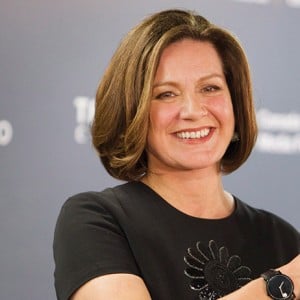 |
Lisa LaFlamme, 50, has been the face and voice of CTV National News, Canada’s most watched news show—with more than one million viewers per night—since she succeeded Lloyd Robertson as chief anchor in 2011. She’s the second woman to anchor a weeknight national newscast in Canada, this year winning the RTDNA award for best newscast for the third year in a row. LaFlamme, originally from Kitchener, Ont., spent 20 years as a foreign correspondent, never saying no to an assignment. She has reported from places such as war-torn Afghanistan—where in 2008, she was shot at by Taliban fighters—and Iraq, where she caught a parasite that ravaged almost half of one kidney. LaFlamme told a magazine at the University of Ottawa, her alma mater, her secret to success: “Keep your head down, work hard, don’t expect anything, don’t get too big for your boots.” — Rachel Browne
#33: Heather Reisman
The best seller of bestsellers
![]()
![]()
![]()
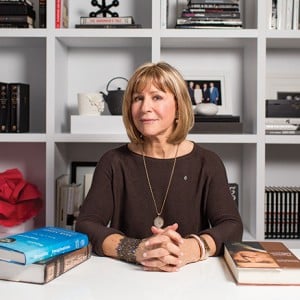 |
The chief executive officer and owner of a chain that moves almost half the books sold in Canada will always have literary opinions of significance to the entire book trade. But Heather Reisman, 66, is no aloof, profit-focused CEO. Indigo’s self-described “chief book lover” is the very face of her company and a voracious, wide-ranging reader: “Novels, poetry, biography, business stories, all kinds of books,” she says. Her intense personal interest means Reisman’s take matters like no one else’s, right down to individual titles. More than anyone else in the country, Reisman can make a bestseller, says one publishing industry observer, “as she did with Lawrence Hill’s Book of Negroes through her enthusiastic early adoption in her Heather’s Picks and in-store interviews.” Meaning, of course, that her silence can also be deadly.
For everyone in the book trade who snarks over the increasing space in Indigo stores devoted to candles, yoga mats and dinnerware, there is an admirer to praise Reisman’s business acumen—and what that’s meant to books in Canada. “If bookshops are still alive here—hers particularly, but also others that have learned from her,” says the publishing executive, “it’s because she was one of the first anywhere to bring in other items to support the core business. Now she’s an international trendsetter in that area.”
The effort to keep her chain flourishing isn’t just a labour of love, says Reisman, who with husband Gerry Schwartz, 72, the billionaire owner of Onex Corp., forms one of Canada’s more formidable power couples. “I totally think the book business has a future. Physical books will be with us for a long time to come—there’s something about their physicality—and Canadians’ commitment to reading will only grow. That’s just who we are.” — Brian Bethune
#32. Rob Merrifield
Pipeline politics
![]()
![]()
![]()
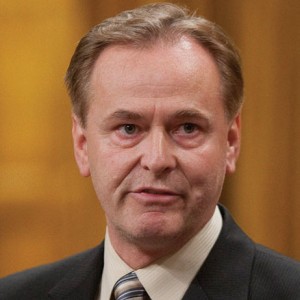 |
By retiring from federal politics to become Premier Jim Prentice’s man in Washington, Rob Merrifield trades second-tier status in Ottawa for a front-line post as Alberta’s envoy in the fight to get Canadian oil to the U.S. market. A former co-chair of the Canada-U.S. interparliamentary group, Merrifield arrives at an interesting time to continue the six-year battle to make Keystone XL a reality: a newly elected Republican majority takes power in the U.S. Senate in January, eager to legislate the cross-border pipeline into reality. One obstacle: a potential veto by President Barack Obama, who wants a lengthy review by the State Department to be completed and is under pressure from environmental groups to reject the project. Merrifield will have to walk a fine line between exploiting Republican attempts to use the pipeline as a partisan weapon, while preventing Canadian oil from becoming politically toxic for Democrats. — Luiza Ch. Savage
#31. Jason Kenney
Travel, schmooze, speak, inspire
![]()
![]()
![]()
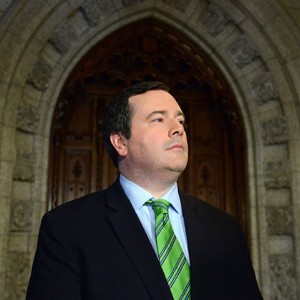 |
He’s everywhere. The minister of employment still does what he used to do when he was minister of immigration: Travel constantly, schmooze with everyone, speak eloquently on Conservative values, pick fights with Conservatives’ foes, back his leader faithfully, effortlessly inspire rumours he wants the boss’s job someday. No one in cabinet has more freedom to define the job his way than Jason Kenney. Having lined up a surprisingly large fraction of the immigrant vote for the Conservatives in 2011, he’s now trying to win respect for community colleges. They deserve “parity of esteem” with university grads, he says at every stop. College alumni vote Conservative far more often than university grads do. Whatever else he does, Kenney remains the Minister Responsible For Conservative Electoral Hopes. — Paul Wells
#30. John Baird
Bring on the bad guys
![]()
![]()
![]()
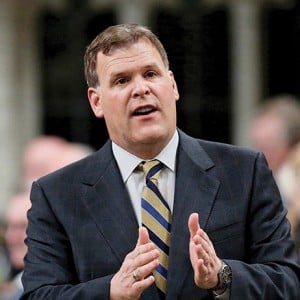 |
When the Conservative party reaches out to its supporters via email, it doesn’t simply tout its commitments to cut taxes and get tough on crime: it also talks about Stephen Harper’s leadership on the world stage. Foreign policy isn’t an afterthought for the Conservatives, it’s a key facet they are trying to sell ahead of next year’s vote. And while most of the credit is awarded the Prime Minister, it is John Baird who Stephen Harper has entrusted as the day-to-day face of government policy. Long one of Harper’s most able combatants and talented ministers, Baird is well-suited to the task of projecting the straightforward strength in foreign policy the government wants as its hallmark. Now, instead of fending off the opposition parties in question period each afternoon, he gets to take on the globe’s bad guys and scourges—though it should also be noted that his contributions in the House of Commons in the lead-up to the launching of airstrikes in Iraq were among the government’s best moments. — Aaron Wherry
#29. Stephen Poloz
Until things look up
![]()
![]()
![]()
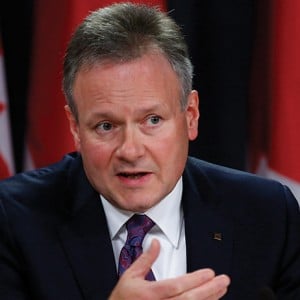 |
The Bank of Canada governor is not on this list because he’s a reliable source of good cheer. Stephen Poloz recently gave a speech, for instance, in which he noted that some 200,000 young Canadians are unemployed, underemployed, or have gone back to school to try to somehow boost their job chances of finding a job. He didn’t make news with that speech. But he did the day after by telling a parliamentary committee that young Canadians should consider taking unpaid work until things look up. The remark wasn’t well received. But all might be forgiven if Poloz, an expert on exports, helps orchestrate a sustained recovery in Canadian sales to our biggest market. “The good news for Canada is that the U.S. economy is gaining traction, particularly in sectors that are beneficial to Canada’s exports,” Poloz said early this month. Past experience suggests Bank of Canada governors get credit when that sort of prediction pans out. — John Geddes
#28. Brad Wall
Everything but a cup that’s Grey
![]()
![]()
![]()
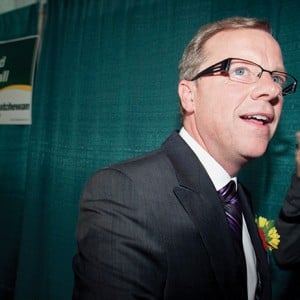 |
You’re tired of hearing it, but Brad Wall is still Confederation’s most popular premier according to Angus Reid’s approval ratings. Robert Ghiz’s surprise resignation in P.E.I. will also leave him as its longest-serving. Wall’s Saskatchewan Party is navigating a scandal over a SaskPower plan to install smart meters province-wide; 105,000 of the meters now have to be removed after they apparently caused nine minor house fires. But the CEO of the utility company has taken the fall, and other political conditions are looking favourable for the Sask Party. Earlier this month Wall hosted a summit with B.C. Premier Christy Clark and new Alberta Premier Jim Prentice: although he is the youngest of the trio, circumstances have made him the senior partner in a powerful western trade bloc that contains three of the four “have” provinces. Now if the only Riders could just go on another decent playoff run… — Colby Cosh
#27. Don Iveson
Making it so
![]()
![]()
![]()
 |
Naheed Nenshi’s li’l northern buddy? It’s an easy assumption to make. The political playbook of Edmonton’s mayor borrows heavily from Nenshi’s, and the two of them are consciously teaming up to rebalance the Alberta treasury in favour of urban development. Like Calgary’s Nenshi, Don Iveson has succeeded in rallying youth to humdrum political activity. Like Nenshi he’s not afraid to emphasize his populist credibility by nerding out shamelessly in a Star Trek uniform. What one notices belatedly is that Iveson might actually be better at all of this than Canada’s Favourite Mayor. In last fall’s municipal election, Iveson was a baby-faced two-term councillor going up against a more experienced colleague and a popular newspaper columnist. Of the city’s 219 polling stations, Iveson won an unbelievable 218. He will need time to wrestle with the legacy of debt and tied-up city revenue left by his ambitious predecessor, Stephen Mandel. But at the tender age of 35, time is something he does have. — Colby Cosh
#26. Tom Renney
Ice-cold practicality
![]()
![]()
![]()
 |
Long counted as one of the more progressive minds in hockey, Tom Renney is now steward of Canada’s game at its grassroots level. The well-travelled NHL coach—Renney saw head-coaching stints with Vancouver, Edmonton and the New York Rangers—was named president and CEO of Hockey Canada in July, beating out what board members described as an outstanding field of candidates.
The 59-year-old’s reputation as a conciliator and communicator will serve him well as he seeks consensus among Hockey Canada’s 13 regional branches representing 635,000 players. And there’ll be no shortage of controversy to test his judgment. The governing body is grappling with issues ranging from body-checking to concussions to the negative influence of overbearing parents. It has also grown more commercial, merchandising its maple-leaf logo, aggressively marketing its marquee tournaments and doing its utmost to capitalize on Olympic hype. Fortunately, Renney, who hails from Cranbrook, B.C., has a coldly practical side, as well as a passion for the game. Coaching in the Big Apple will teach you that. — Charlie Gillis
#25. Marianne McKenna
Building harmony
![]()
![]()
![]()
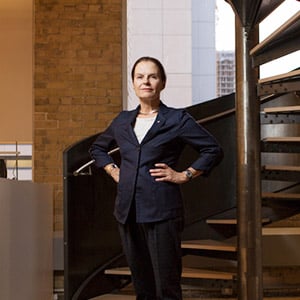 |
In the era of “starchitects”—whose sculptural showpieces often stand defiantly apart from what’s around them—her buildings can seem understated. Marianne McKenna’s celebrated Royal Conservatory Telus Centre for Performance and Learning in Toronto, for instance, elegantly combines heritage buildings and warm new spaces. It’s pure harmony. Born in Montreal, McKenna is a founding partner of architecture firm KPMB. “We’ve been embraced as a team,” she has said of the close-knit Toronto office’s influence. KPMB’s landmarks in their home city include the recent expansion of University of Toronto’s Rotman School of Management, which McKenna directed. But her reach is international. Current McKenna ventures include the Massachusetts Institute for Technology’s Music and Theater Arts Project in Walker Memorial Hall and an expansion of Orchestra Hall in Minneapolis. — John Geddes
#24. Alia Hogben
Right voice, right time
![]()
![]()
![]()
 |
When Alia Hogben took over the Canadian Council of Muslim Women a decade ago as the group’s executive director, few could have predicted the long-time bureaucrat from Ontario’s ministry of community and social services would emerge as one of the most compelling liberal voices of Islam in Canada. Her moderate Muslim perspective is indispensable. As a 2012 Order of Canada recipient, awarded for her work on women’s rights and promotion of interfaith dialogue, she is only the second female Canadian Muslim to receive that honour. She also has an honorary doctorate from Queen’s University and a column in the Kingston Whig-Standard, where she’s written how she was discouraged that many people, such as members of Islamic State, use religion as justification for unspeakable crimes. Recently, Hogben told the Canadian Press she’s disheartened that Stephen Harper did not denounce the anti-Muslim backlash in the aftermath of the Ottawa shooting. But Hogben is not one to point fingers. Rather, she champions Islam’s message of inclusivity. — Aaron Hutchins
#23. Galen G. Weston
More than that guy on TV
![]()
![]()
![]()
 |
More than a pitchman for President’s Choice, Galen G. Weston cemented his reputation as a visionary corporate deal-maker after closing Loblaw’s $12.4-billion acquisition of Shoppers Drug Mart earlier this year. Now the Weston family scion is stepping further into the weeds of the business as president of the merged company, in addition to being its executive chairman. He will not only oversee the grocery giant’s overall strategy as it does battle with U.S. interlopers Wal-Mart and Target, but its daily operations, too.
With the expanded role comes increased expectations, but Weston has so far proven adept at navigating a challenging, consumer-focused industry that plays an almost daily role in many Canadians’ lives. The recent relaunch of Loblaw’s popular PC line, with a focus on removing artificial colours and flavours from everything from ice cream to spaghetti sauce, suggests a company in tune with changing tastes. A more telling moment, however, was Weston’s heartfelt response to last year’s collapse of a Bangladesh factory that churned out Joe Fresh clothing. Instead of pointing the finger at suppliers or pulling production from the country altogether, Weston took immediate responsibility and promised to be a force for good. So far that includes a pledge to compensate families of the 1,129 victims—regardless of whether they produced clothing for Loblaw or a competitor—donating to local charities and becoming one of the few big North American retailers to push for improved building and fire standards in the South Asian country. — Chris Sorensen
#22. Jim Prentice
Man and moment’s perfect match
![]()
![]()
![]()
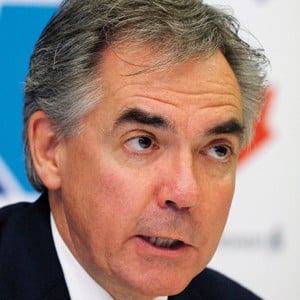 |
Alberta’s Progressive Conservatives swept four by-elections Oct. 27, sending opposition parties into a spiral of soul-searching and confirming that Albertans are prepared to give their new premier a chance. Jim Prentice, 58, walked away from a seven-figure CIBC salary to rescue the ethically challenged party whose continuous control of Alberta’s legislature has entered year 44. Even those who are exhausted by one-party rule in the province acknowledge the perfect match between man and moment. Prentice combines private sector accomplishment, strong business connections from Calgary to Bay Street, and decades of working with and for First Nations, who increasingly wield a moral veto over the pipeline infrastructure Alberta wants. An old Red Tory from the Joe Clark family tree, Prentice served as a roving talent in Stephen Harper’s cabinets without making pratfalls or visible enemies. To keep the Alberta PCs from dying of complacency, he’ll need all that ability. And a bounce-back in oil prices wouldn’t hurt. — Colby Cosh
#21. Naomi Klein
She changes everything
![]()
![]()
![]()
 |
Naomi Klein, 44, is one of the most internationally celebrated Canadians alive, and when it comes to influence based entirely upon persuasion—as opposed to the inherent political or economic power of a position held—she has few peers in this country. Klein is impeccably connected to counterculture royalty. The daughter of one documentary filmmaker—Bonnie Sherr Klein, famous for her anti-pornography movie Not a Love Story—Klein is married to another, Avi Lewis, son of journalist Michele Landsberg and former Ontario NDP leader and Canadian ambassador to the UN, Stephen Lewis. But her reach arguably exceeds even her father-in-law’s. From No Logo (2000) to This Changes Everything (2014), Klein’s bestselling and award-winning critiques of globalized capitalism and climate change—translated into dozens of languages—have been touchstones for the political left, not only in Canada but worldwide, and hailed as incisive manifestos for socio-economic change. — Brian Bethune
#20. Thomas Mulcair
Betting substance trumps style
![]()
![]()
![]()
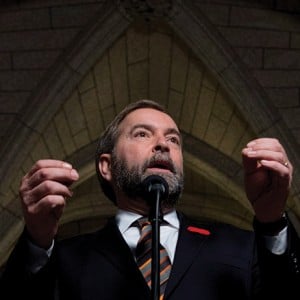 |
Up against Stephen Harper, a formidable long-serving incumbent, and Justin Trudeau, a flashy poll-topping interloper, Thomas Mulcair continues to more than hold his own—at least in the House of Commons. With his precise interrogative style, he’s the acknowledged master of question period. But this fall, the New Democratic Party leader is trying a new strategy—without giving up his prosecutor-in-chief mantle. Mulcair has begun, about a year before the federal election slated for Oct. 19, 2015, to roll out detailed policy. The first big push was for a federal program aimed at providing $15-a-day daycare, with any province an NDP government in Ottawa could coax into a deal. Mulcair even ventured on CTV’s daytime talk show The Social, which is co-hosted by four women, to try to sell his child care plan. So far, the polls don’t show him gaining on Trudeau, but Mulcair is betting that against a charismatic rival, his best shot at real power might just come from real policy. — John Geddes
#19. Jean-Marc Vallée
You could be my shining star
![]()
![]()
![]()
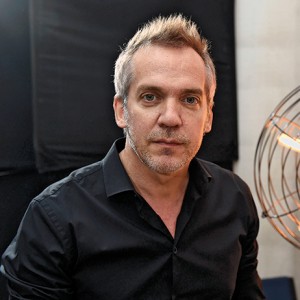 |
There aren’t a lot of directors in Hollywood with a reputation for turning around the careers of fading stars, but this 51-year-old Montreal native may be one of them. His second U.S. film, The Dallas Buyers Club, completed Matthew McConaughey’s transformation from affable lightweight into Oscar-winning drama star; before that, the period film The Young Victoria helped Emily Blunt erase the stigma of The Jane Austen Book Club. Now Vallée is back with the survival drama Wild, where Reese Witherspoon—who has mostly starred in failed romantic comedies since her 2006 Academy Award—stars as a woman hiking across the U.S. on a voyage of self-discovery and R-rated language. With his reputation for getting the best performances out of actors whose depths haven’t been explored, Vallée may be on the way to becoming a first-choice director: Witherspoon, who owned the rights to Wild’s source material, personally chose him over more famous names. — Jaime J. Weinman
#18. Art Sterritt
A little louder than silence
![]()
![]()
![]()
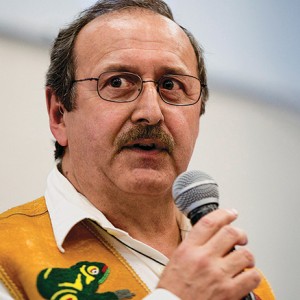 |
It is hard to imagine a more powerful opponent to the proposed Northern Gateway pipeline than Art Sterritt. The executive director of the Coastal First Nations, an influential lobby representing nine B.C. bands, he acts as an unyielding barricade to the 1,170-km pipeline that Canada’s oil industry dearly wishes will deliver Alberta crude to the coast.
“The facts are clear. Accidents happen, cleanup is impossible,” says Sterritt, 66, noting that BP has cleaned up less than one-third of the oil discharged into the Gulf of Mexico in the wake of the Deepwater Horizon disaster. In B.C., a spill would mark “the end of the coast as we know it,” he says, adding, “the end of our livelihood.”
In a recent PR coup, Sterritt, as amiable as he is intimidating, convinced Paul Simon to lend his song The Sounds of Silence to an anti-Northern Gateway TV ad, featuring haunting images from the Exxon Valdez spill, one of history’s most devastating. He is a chief architect of the Great Bear Rainforest agreement, which protects the world’s largest intact coastal rainforest from logging. It was Sterritt who declared the ban on grizzly hunting that chased trophy hunters off the traditional territories of the Coastal First Nations, and Sterritt who barred tankers from entering their waters. Ignore him at your peril, B.C. governments have learned.
But while Sterritt, the son of a Gitxsan hereditary chief, is militant, he’s not inflexible. He’s thrown his considerable heft behind B.C.’s nascent liquefied natural gas industry, a move that has put him at odds with his allies in the environmental movement. If spilled, liquefied gas would evaporate, he explains. Bitumen, on the other hand, would be impossible to clean up. “Our well-being is dependent on the health of our lands and waters,” says Sterritt. “And our lands and waters are now dependent on us.” — Nancy Macdonald
#17. Joe Oliver
The outsider on the inside
![]()
![]()
![]()
 |
Joe Oliver, Canada’s 74-year-old federal finance minister, automatically wields clout as the man governing the economy. With an election under way, that influence extends to shaping and selling the Conservative party’s spring budget/campaign platform focused on tax cuts—along with mobilizing the party in Toronto, where he represents Eglinton-Lawrence. The Montreal native, who holds a McGill law degree, a Harvard M.B.A. and names Margaret Thatcher as a hero, exudes a staid earnestness destined to be an asset when selling fiscal probity. Oliver’s establishment insider connections don’t hurt, either: he was elected in 2009 at age 69 after five decades on Bay Street—first in investment banking, then heading the Investment Dealers’ Association. Appointed Natural Resources minister as a rookie MP, he proved a tireless, if controversial, defender of industry. He sailed into Finance this spring when Jim Flaherty left politics. Now he’s centre stage as fiscal front man—and cannily without stealing too much of the spotlight. — Anne Kingston
16. Christy Clark
A pro at beating the odds
![]()
![]()
![]()
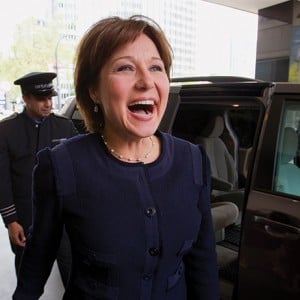 |
Christy Clark did the unthinkable in the last B.C. election, raising the prostrated Liberals from the dead, winning the election for a party whose brand was so tarnished, it was considering a name change. The B.C. premier did it by promising voters a bright, new day—100,000 jobs and a trillion-dollar economic opportunity by kick-starting liquefied natural gas (LNG) development in the province’s north. On the hustings, she is magnificent. No one active in politics in Canada today can match the 49-year-old at the old-school game of retail politicking. Her magnetism, megawatt smile and innate charisma are rare gifts. But, just as Clark’s fate rested on LNG last year, her re-election in 2017 will hinge entirely on her ability to get at least one of the potential gas projects up and running. The odds are long, especially as the price of gas continues to crater. But Clark has made a career out of beating them. — Nancy Macdonald
#15: Kirstine Stewart
A little bird told us
![]()
![]()
![]()
 |
Usually, 32,000 Twitter followers don’t scream “power,” especially when you compare those numbers to the likes of Drake’s 17.9 million followers or even Toronto’s Drake Hotel (no relation to the rap star), which has 57,000. But Kirstine Stewart’s influence doesn’t come from the updates in her Twitter stream. It is her role as Twitter’s VP of North American media, where she is developing partnerships for the social media network among the TV, sports and music industries, that makes her one of Canada’s most high-profile businesspeople. Once the rising star of the television world, Stewart was behind some of the CBC’s best original shows, including Dragons’ Den, Republic of Doyle and Battle of the Blades. By 2011, she was appointed executive vice-president of CBC’s English-language services and, shortly thereafter, she married Zaib Shaikh, the star of Little Mosque on the Prairie. Then came a tweet from Adam Bain, Twitter’s president of global revenue, announcing Stewart as the new head of Twitter Canada. Her recent promotion is further proof she’s on a singular upward trajectory. Come spring, she’ll publish her first book, Our Turn: Time for a New Kind of Leader. So how high can Stewart fly? Years ago, the story goes, when she was a young TV sales exec, she visited a fortune teller in Hong Kong, who told her she would one day become the prime minister of Canada. Obviously, that has not happened. Yet. — Aaron Hutchins
#14: Gerry Butts
Friendship on the way up
![]()
![]()
![]()
 |
There is an old photo of Gerry Butts and Justin Trudeau in their younger days that has made its way into the public domain—Trudeau in a sleeveless shirt, jeans and sandals; Butts in ripped jeans, sandals, a silly hat and long hair. It’s not simply funny in that way that all old photos highlight younger versions of ourselves and dated fashion choices—it’s also a reminder of the history Trudeau and his closest confidant share. Butts is now the most prominent (he’s a frequent and assertive tweeter) and powerful of a coterie of advisers around Trudeau that could form the basis of the next Prime Minister’s Office—provided they can seal the deal with an electorate that has at least shown an openness to the idea of Trudeau becoming prime minister. The former university mates are standing on the doorstep of our highest elected office, an achievement that would make political legends of them both. — Aaron Wherry
#13. Justin Trudeau
Float like a butterfly, sting like a bee
![]()
![]()
![]()
 |
The Liberals have led the other parties in national polls every month since Justin Trudeau became their leader. He draws the sort of fevered crowds you more often encounter at rock concerts. Stephen Harper almost never mentions Tom Mulcair in speeches, but he fairly snarls Trudeau’s name. Canadian politics in 2014 seemed like an endless referendum, not on anything Trudeau proposed, but on the very notion of him.
Now comes the hard part. Trudeau has a knack for saying outrageous things—like turning the Canadian Forces’ CF-18 fleet into a phallic symbol—and his seemed-like-a-good-idea-at-the-time snap decisions have led him to eject every Liberal senator and two MPs from his caucus. It’s hard to build a bigger tent with a smaller army. But he’s recruiting smart young Liberal candidates in a lot of ridings. The Liberal palace guard just logged a persuasive victory in Ontario for Kathleen Wynne. Trudeau’s like the old urban myth of the bumblebee: theoretically he can’t fly, and yet there he is. — Paul Wells
#12. John Tory
A chance to rebuild
![]()
![]()
![]()
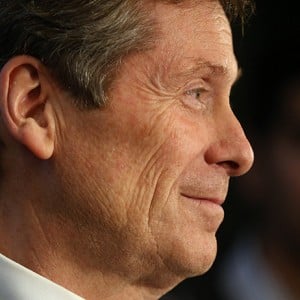 |
Seldom has a politician revelled in post-election bliss like John Tory. In the days after Toronto’s Oct. 27 municipal election, the mayor-elect seemed to be everywhere, brushing cows at the Royal Winter Fair, or personally delivering mousetraps to the rodent-infested City Hall press gallery (while managing, somehow, to forgo the obvious joke). You can forgive the man his honeymoon: After three failed electoral races, Tory’s need for a win had reached crisis proportions.
This one was transformative, vaulting the 60-year-old overnight from lovable loser to political powerhouse. In shutting the door on the traumatizing Rob Ford era, Tory has roughed in an electoral bridge between Toronto’s downtown and its increasingly alienated suburbs, where Rob and Doug Ford had built a formidable support base. To be sure, it’s a shaky construct: Doug, who replaced his cancer-stricken brother on the ballot on Sept. 12, edged out Tory in two of the city’s three inner suburbs. But if Tory can keep Toronto united, he will be poised to restore the city to its place among the country’s most influential urban centres, leading the collective drive for improvements to transportation, economic activity and social services.
That’s a good thing—hard as it might be for other Canadians to admit. In the tumult of the Ford era, Toronto had been eclipsed by Vancouver and Calgary among cities embracing their growing economic and cultural importance, and its voice was missed. Yet the country’s largest city remains its undisputed financial hub, more so now that falling oil prices have Calgary on edge. And it’s hard to imagine a figure better equipped than Tory to harness Toronto’s energy. His experience in local corporate, media, political and non-profit circles yielded strong connections to players whose help he’ll need to advance its agenda. His reputed gift for persuasion can break down the barriers that stymied hard-headed Rob Ford. Shortly after Tory’s election, for instance, Toronto Police Chief Bill Blair softened his long-standing resistance to cutting the city’s bloated police budget.
More seems possible thanks to a well-run campaign, in which Tory sidestepped the sort of landmines that in the past called his judgment into question. And while enormous challenges remain—Toronto remains beset by traffic gridlock, swelling poverty and hare-brained council decisions—the man wearing the chain of office has promised to bring back the city once “known as a beacon of respect for everybody.” For the first time in a long while, it seems possible to believe. — Charlie Gillis
#11. Kathleen Wynne



#10. Philippe Couillard



Central Canada’s power couple
 |
A year ago Kathleen Wynne seemed the caretaker premier of a doomed Liberal government, and the Quebec oddsmakers would have given Philippe Couillard less-than-even odds of defeating the Parti Québécois after only one short term. But now the two hold solid majorities, and as they looked around and tried to understand how they managed it, each noticed the other—and found a kindred spirit.
Neither is much of a showboat. Each has senior cabinet-level experience in a predecessor’s government, but neither seems like a political natural. Each inherited a fiscal mess, which will require belt-tightening measures that will make it hard to maintain the popularity they enjoyed for a few weeks after their elections.
They bonded in a Toronto meeting before this August’s annual premiers’ conference in Charlottetown. At that broader conference, their common front was remarkable, and it bore quick fruit. Quebec returned as a full participant in a health care innovation working group the premiers are running, after 18 months of a PQ boycott. And the premiers’ final communiqué matched Wynne’s and Couillard’s wish list: calls for more infrastructure funding and a formula for increasing health care funding to account for aging populations.
“They really are quite compatible,” an aide to Wynne said. Each premier lauded the other’s abilities in separate interviews. Each has good reason to need a friend. Wynne campaigned against Prime Minister Stephen Harper’s refusal to enhance the Canada Pension Plan as much as she did against her provincial opponents. He took it personally, and the two don’t talk. Couillard gets along quite well with Harper. His problem is closer to home, among his own electorate: the Quebec economy has stalled alarmingly since the spring, forcing painful decisions on spending cuts that have swiftly burned away the Couillard government’s popularity.
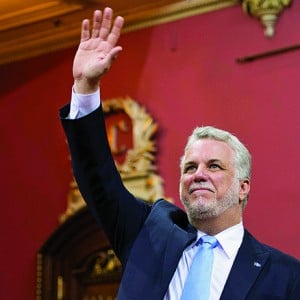 Fortunately for Couillard, the opposition parties are in a state of disarray that gives him some time to achieve and demonstrate results. He handed the Parti Québécois its worst thumping in 44 years, and the shattered party has a long and divisive leadership campaign ahead of it. (If Couillard’s luck holds out, the PQ will pick newspaper tycoon Pierre Karl Peladeau as their leader, a man with wafer-thin political experience whose blue-blood values clash with just about everything the social-democratic PQ holds dear.) The third party, François Legault’s Coalition Avenir Québec, leads the PQ in most polls these days, but it can’t manage to convey the impression that it’s a real party, instead of just Legault’s personal one-man show.
Fortunately for Couillard, the opposition parties are in a state of disarray that gives him some time to achieve and demonstrate results. He handed the Parti Québécois its worst thumping in 44 years, and the shattered party has a long and divisive leadership campaign ahead of it. (If Couillard’s luck holds out, the PQ will pick newspaper tycoon Pierre Karl Peladeau as their leader, a man with wafer-thin political experience whose blue-blood values clash with just about everything the social-democratic PQ holds dear.) The third party, François Legault’s Coalition Avenir Québec, leads the PQ in most polls these days, but it can’t manage to convey the impression that it’s a real party, instead of just Legault’s personal one-man show.
Wynne’s luck is more direct: the manufacturing regions of Ontario have surprised everyone by leading Canadian job growth in the last two months, with nearly 62,000 out of 117,000 jobs created Canada-wide.
These days, Ontario and Quebec cabinet ministers frequently confer with each other first before making moves outside their home provinces. The Wynne-Couillard power couple has fast become an effective counterweight to the so-called “big shift” that had been seeing populations, money, job and political power moving westward within Confederation. And because these two majority governments still have more than three years left before they face voters again in election campaigns, they are able to plan that long-time horizon together.
Any premier’s first priority is to put out fires at home; alliances abroad, even as far as the next province over, take a back seat. But this alliance between Wynne and Couillard is conscious and acknowledged by both. “It’s time to put Central Canada back at the centre of the map,” Couillard told reporters during an Ontario visit in October.
There’s one more reason why Couillard and Wynne will continue to have clout heading into 2015. Between them, their two provinces hold nearly 200 federal seats. Dozens of those seats have bounced from party to party in recent years and could do so again in the federal election next October. That means every federal leader will want to deliver on Ontario and Quebec priorities. For two provincial Liberal leaders whose future looked decidedly shaky only a year ago, today’s future looks bright. — Paul Wells
#9. Jenni Byrne
Fought and conquered
![]()
![]()
![]()
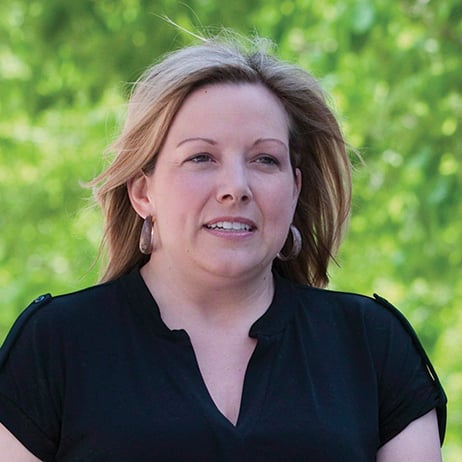 |
On her right arm, Jenni Byrne has a tattoo of the traditional Byrne clan motto: Certavi et vici. In case your Latin is a little rusty, that translates as, “I have fought and conquered.” Her familial claim to that boast aside, Byrne has the political record to justify the ink. As the Conservative party’s director of political operations, deputy campaign manager for the Conservatives in 2008 and campaign manager in 2011, Byrne helped the party not only twice repeat the victory of 2006, but build to its current majority mandate. She joined the Reform party at the age of 16 and has been touted as a tough but astute organizer with an understanding of the party base. Now a deputy chief of staff in the Prime Minister’s Office, she has again been asked to run the 2015 campaign. But the fight next year will be the hardest to date—re-election requiring Byrne & Co. to conquer a polling deficit, voter fatigue and history (not since Wilfrid Laurier’s Liberals has a party won for consecutive elections with the same leader). — Aaron Wherry
#8. Bob Paulson
Command in testing times
![]()
![]()
![]()
 |
It was the Oct. 22 shootings at the National War Memorial and then in the Parliament Buildings that prompted many Canadians to focus on the RCMP commissioner for the first time. Poised, fluently bilingual, willing to inject his own opinions into the usual cautious cop verbiage, Bob Paulson, 56, proved to be a commanding presence on a chaotic day. As the government moves to expand the RCMP’s anti-terrorism powers in the aftermath, Paulson will have to assuage concerns about any erosion of civil liberties. This won’t be the first delicate task he has taken on since being appointed the top Mountie in 2011. He was in the political spotlight earlier this year over his force’s finding that Prime Minister Stephen Harper’s former chief of staff, Nigel Wright, didn’t break any laws by giving $90,000 to then-senator Mike Duffy. At Duffy’s trial, set for next spring, the work of Paulson’s investigators is bound to come under closer scrutiny. — John Geddes
#7. Bharat Masrani
Steady as he goes
![]()
![]()
![]()
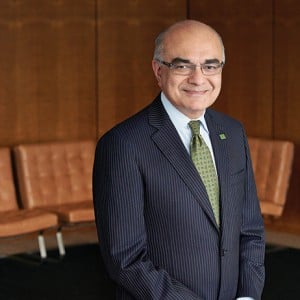 |
Measured by total assets, Toronto-Dominion Bank is now the country’s largest bank (having overtaken Royal Bank of Canada this year) and is well on its way to becoming Canada’s first trillion-dollar financial institution. That alone gives Bharat Masrani, TD’s new CEO, immense influence over the economy. Born in Uganda to Indian parents, raised and trained in the U.K., and boasting deep experience in the U.S. and Canada, Masrani’s resumé befits the modern and complex world of banking. He’s indicated he will be outspoken on economic and policy issues, just as his mentor and predecessor Ed Clark often weighed in on the housing market and indebted households. As with any new bank CEO—this year alone four of the Big Five got new chiefs—it will take time for Masrani to define his tenure, but he’s hinted at the direction he’ll take: steady as it goes internal growth rather than big-ticket acquisitions. Whatever brings in the billions. — Jason Kirby
#6. Guy A. Lepage
The king of coaxing
![]()
![]()
![]()
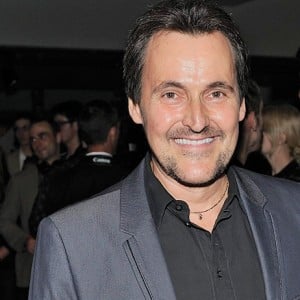 |
Guy A. Lepage’s TV talk show, Tout le monde en parle, landed firmly on English Canada’s radar last fall when Montreal Canadiens defenceman P.K. Subban shared his tactic for throwing the opposing team off its game: farting in front of the net. With more than a million francophone viewers, it wasn’t the first time Lepage’s top-rated Radio-Canada program, modelled on a French show of the same name, made waves outside Quebec. Jack Layton’s affable appearances, cane in hand, paved the way for the NDP’s Orange Wave in the 2011 federal election. Justin Trudeau, meanwhile, was ridiculed earlier this year after joking to Lepage about Russia’s invasion of Ukraine, blaming a “bad mood” after Russia failed to win an Olympic hockey medal at Sochi. Given his propensity to coax newsworthy comments from people trained to do otherwise, Lepage is a media personality Canadians can ill afford to ignore, regardless of which official language they speak. — Chris Sorensen
#5. Janice Charette
A mandarin among hyper-partisans
![]()
![]()
![]()
 |
Like all the mandarins before her who scrabbled their way to the federal bureaucracy’s top job, Janice Charette is routinely described as an “Ottawa insider.” The Privy Council Clerk has to be, of course, but there’s more to her than that. Since 2010, Charette has worked closely with Prime Minister Stephen Harper and his cabinet. So, unlike the two previous clerks, with neither of whom Harper had much history before they became his most senior bureaucratic advisers, in Charette he picked a senior bureaucratic adviser he already knew well. Her CV includes a string of the expected top public service posts, but also stints as a political aide: She was Jean Charest’s chief of staff from 1997-98 when he was the leader of the old Progressive Conservatives. That was a long time ago, and Charette is viewed as properly neutral now, but her old experience in party politics might have left her with useful insights for navigating power circles in today’s hyper-partisan Ottawa. — John Geddes
#4. Beverley McLachlin
Unruffled justice
![]()
![]()
![]()
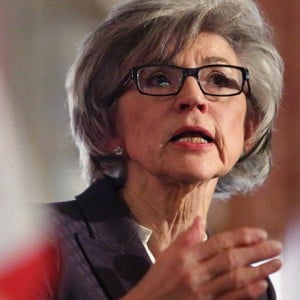 |
Beverley McLachlin, 71, is the longest-serving chief justice in the Supreme Court of Canada’s history. The established hallmarks of her leadership: a less fractious bench, more open to outsiders. Yet dramatic events have revealed new facets of her style. After the court rejected Stephen Harper’s choice of Marc Nadon to join its ranks early this year—on grounds that Nadon wasn’t eligible, as a federal court judge, to fill a Quebec vacancy—the Prime Minister’s Office lashed out at McLachlin. In public, at least, she was unruffled: “There’s always going to be tensions here and there, but it is part of the process.”
The court’s biggest decision next year could be on assisted suicide, on which McLachlin’s long tenure comes into play. She is the only judge still on the court who was sitting the last time the issue came before it—in the 1993 Sue Rodrigues case. Back then, the majority ruled against allowing assisted suicide. McLachlin wrote for the minority that would have allowed it. — John Geddes
#3. Mark Wiseman
Your money, his genius
![]()
![]()
![]()
 |
As the president and CEO of the Canada Pension Plan Investment Board, Mark Wiseman has more direct responsibility than anybody over the retirement incomes of millions of Canadians. At the time of the board’s most recent quarterly report, he was overseeing CPP assets worth a cool $234.4 billion. One indicator of how shrewdly he invests that national nest egg is the lack of debate surrounding the CPP’s soundness—even when just about every other aspect of the way Canadians save for retirement is up for argument. And Wiseman isn’t just some cautious money manager on a massive scale. Among his recent buys: a 39 per cent stake in a Brussels-based parking-lot company operating in 350 cities. His aim is a “globally diversified, resilient portfolio.” How’s he doing so far? Well, for the 2013-14 financial year, the CPP board posted a 16.5 per cent annual return. How’d your RSP do last year? That’s why Wiseman is so powerful. — John Geddes
#2. Joanne Liu
Speaking unspeakable truths
![]()
![]()
![]()
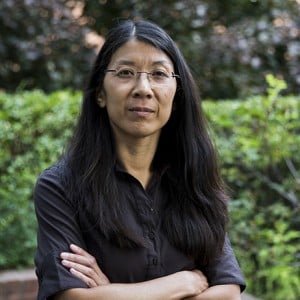 |
There’s much to be said for plain language, and at the worst of times it becomes essential—something Joanne Liu grasped last fall as the death toll in West Africa began to soar. “Today, Ebola is winning,” declared the international president of Doctors Without Borders (Médecins Sans Frontières) at a high-level UN meeting on Sept. 25. “Our 150-bed facility in Monrovia [Liberia] opens for just 30 minutes each morning. Only a few people are admitted—to fill beds made empty by those who died overnight. The sick continue to be turned away, only to return home and spread the virus among loved ones and neighbours.”
It was a searing portrait of an epidemiological disaster, issued by a physician with scant time for diplomatic niceties. The 49-year-old pediatric emergency physician from Quebec City took the helm at MSF six months before the Ebola outbreak in West Africa. As her teams fanned out last summer across the afflicted areas, she realized that her idealistic non-profit organization was the only bulwark against a deadly and fast-moving pathogen. The affected countries—Guinea, Liberia, Sierra Leone—lacked the money or health care infrastructure to mount an adequate response. Western governments let the crisis slide, apparently on the belief the outbreak would peter out.
Throughout the disaster, Liu has proven a passionate yet decisive leader. By early fall, MSF had deployed nearly 250 international staff to affected communities, hiring and training 2,800 local people in the unwieldy methods of treating Ebola. Meanwhile, Liu put the screws to inert foreign governments—fearlessly giving voice to unspeakable truths. “I’ve never had to build a crematorium in the middle of my mission and burn 100 bodies in the same day,” she told Maclean’s in October. “All my teams are telling us it is hell on Earth right now.”
At times, it seemed as though her frustration was getting the best of her, as in early October, when the international media shifted its lens from Africa to Dallas and the first Ebola case to arrive in North America. “We must stop focusing on hypothetical cases in Canada and the U.S.,” Liu told her hometown newspaper, Le Soleil. “Our means are light years away from those in Liberia. The patient has been quarantined and there will be a hundred caregivers around him. The chain of transmission will stop with that person.” It came off as callous: The infected man, Thomas Duncan, ultimately died. But it was hard to argue with Liu’s logic. Why should one case in Texas supersede the catastrophe in West Africa, where 5,000 had died and thousands of new cases were appearing each week?
Liu comes by her toughness honestly. As one of few Asians in Quebec’s capital in the 1970s (her family owned a Chinese restaurant), Liu withstood racist taunting in her early school years but persevered to become one of the brightest lights at McGill University’s medical school. She took her first overseas aid trip at 18, got her specialty in pediatric emergency care at New York University and joined MSF in 1996. Today, she ranks alongside fellow Canadian Margaret Chan, head of the World Health Organization, as one of most influential voices in international aid. And those sluggish governments are finally listening. As of this writing, they had kicked in nearly $400 million to battle Ebola, money Liu said must be “translated into immediate action.” — Charlie Gillis
#1. Stephen Harper
Fourth time lucky?
![]()
![]()
![]()
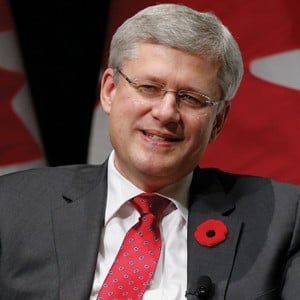 |
Maybe he’ll just be prime minister forever. In 2015 he will still be three years younger than Jean Chrétien was when the Liberal politician won the first of three consecutive majorities. But you hear more pundits betting on Harper’s downfall than on his triumph.
He ignores them. When’s the last time the conventional wisdom bet on Stephen Harper? Not in 2006, when the leader, then deemed to be devoid of charisma, first ascended to power by beating Paul Martin to form a minority government. And not even as recently as 2013, when Mike Duffy was hanging around his neck like the world’s biggest albatross, a popular bet in the Bytown saloons was that Harper would quit before Labour Day. Instead, as 2014 closes, the Commons debates are about whether his tax cuts are deep enough, universal enough, generous enough. That’s the kind of debate Harper has prayed for.
Winning a fourth consecutive election would be incredibly difficult. But he’ll go into the next campaign with the federal budget balanced and, he hopes, the bloom off Justin Trudeau’s rose. He has always sought to run as the sensible incumbent against reckless sorcerers’ apprentices. Within that frame, small surpluses are useful: there’s not enough money in the kitty to pay for Liberal-sized or NDP-sized ambitions. “Don’t vote for big spenders” is not a message to stir the heart.
But he doesn’t need to stir the heart. He needs to win. Only two other men have won four consecutive elections: John A. Macdonald and Wilfrid Laurier. Even Harper’s own supporters might blanche at the notion that he should rank in their company. But you count this guy out at your peril. — Paul Wells
